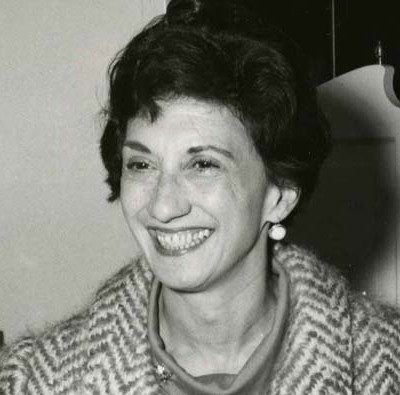
Albert Cazen (c.1885-1966) was born in present-day Lithuania and immigrated to the United States about 1902 to escape forced conscription into the Russian army. Cazen was the youngest of three children, and the only boy, born to a man who had been drafted into the army at 15 and discharged some 25 years later. The family was poor, and once Cazen reached military age, his oldest sister sacrificed her dowry to fund his journey.
As Cazen and another young man approached the German border, Russian guards fired on them. Cazen escaped, but his traveling companion was killed. Cazen reached Hamburg where he boarded a boat to the United States. He joined family in Pittsburgh, and a cousin taught him how to be a shochet (kosher butcher). Within a few years, Cazen opened Cazen’s Meat Market on Logan Street in the heart of the lower Hill District.
“My mother was from a different milieu,” Cazen’s daughter, the local actress Freda Alber, recalled in a 1985 oral history conducted by the National Council of Jewish Women. Anna Sachs came from a fairly well-to-do Ukrainian family. They lived in Poltava, within sight of a large summer residence of Russian nobility. Her father, Carl Sachs, owned a kvass brewery. Unlike Cazen, the Sachs family spent six months traveling through Europe before arriving in the United States to join a relative who owned a cap and hat factory in Pittsburgh. “Everybody wore derbies and that sort of thing in those days. They had them piled in cases, one on top of the other, and they would push these things down the street,” Alber said. “Well my grandfather was a sophisticated man and that wasn’t for him. So one day he just took the whole dang thing and dumped it into the Monongahela River.” Instead, Sachs opened a ready-to-wear shop catering to workingmen. The family lived above the store. Their home was so drafty they had to hang Oriental rugs on the walls to keep the heat from the wood stove from escaping.
Albert Cazen married Anna Sachs about 1908. For their engagement, he gave her a bracelet of gold coins. Their first home was on Locust Street. While Albert Cazen ran his meat market on Logan, Anna Cazen sold ready-to-wear from her shop on Wylie Avenue. “She was a smart gal. She was a very ambitious gal,” Alber said. Anna Cazen stayed in business even after she gave birth to Freda, in 1911. She would bring the baby to the shop to sleep while she worked. After the birth of their second child, Abe, two years later, the Cazens bought the building on Logan Street, and Anna stayed home.
The Cazens lived above the Logan Street shop. They had a three-bedroom unit with an upstairs apartment where Saches lived after they retired. The lot had enough room in the back for the family to build a sukkah on their property each fall. Because of the steep grade of the Logan Street, they could pass food directly into the sukkah from the kitchen window.
In 1926, as Freda prepared to enter Fifth Avenue High School, Cazen moved his shop to 1227 Fifth Avenue. The larger facilities allowed him to add a wholesale business to his retail operation and rent out space to restaurateurs Bernard Reichbaum, from 1926 to 1938, and Hyman Schwartz, from 1939 to 1953. “There was a shochet who took care of the chickens and the geese,” Alber recalled. “His wife tried so hard to speak English. She had trouble. If somebody said they’d like a particular size of duck or goose, she’d say, ‘Go downstairs. My husband’ll kill you.’”
In advertisements, Cazen boasted of distribution deals with national chains, such as the Kosher Star Sausage Manufacturing Company of Chicago and Manischewitz, with whom he claimed to have an exclusive license for matzos and condensed chicken soup. As the supply chain pushed consumers farther from the sources of their food, he took great pains to reassure his customers that his meat was strictly kosher. In 1939, he became one of the early members of the Hebrew Butcher Workers Union of Pittsburgh, Local No. 223.
The Cazens eventually moved to Albemarle Street, in Squirrel Hill, but the shop stayed on Fifth Avenue until Cazen sold it about 1955. Cazen had become so well known that subsequent tenants, for years, continued to refer to 1227 Fifth as “the Cazen building.”